Yucatán
Hola a todos!
A first update from Central America, covering the Yucatán peninsula and concerned mostly with food.
 Tulum
Tulum
Our Route (the boring stuff)
We landed in Cancun after a 24-hour bus-and-plane ordeal (including a drenching walk through downtown Seattle), and immediately boarded the ferry to Isla Mujeres. We spent two nights in Isla, two in Tulum, two in Valladolid, and four in Mérida before taking the night bus southwest to Palenque.
Maya Ruins
The Classic Maya clearly didn’t have the interest of tourists in mind when constructing their cities. They built scores of different sites, in highly inaccessible places, and gave them names such as Dzibilchaltun, Chunhuhub, and Kohunlich.
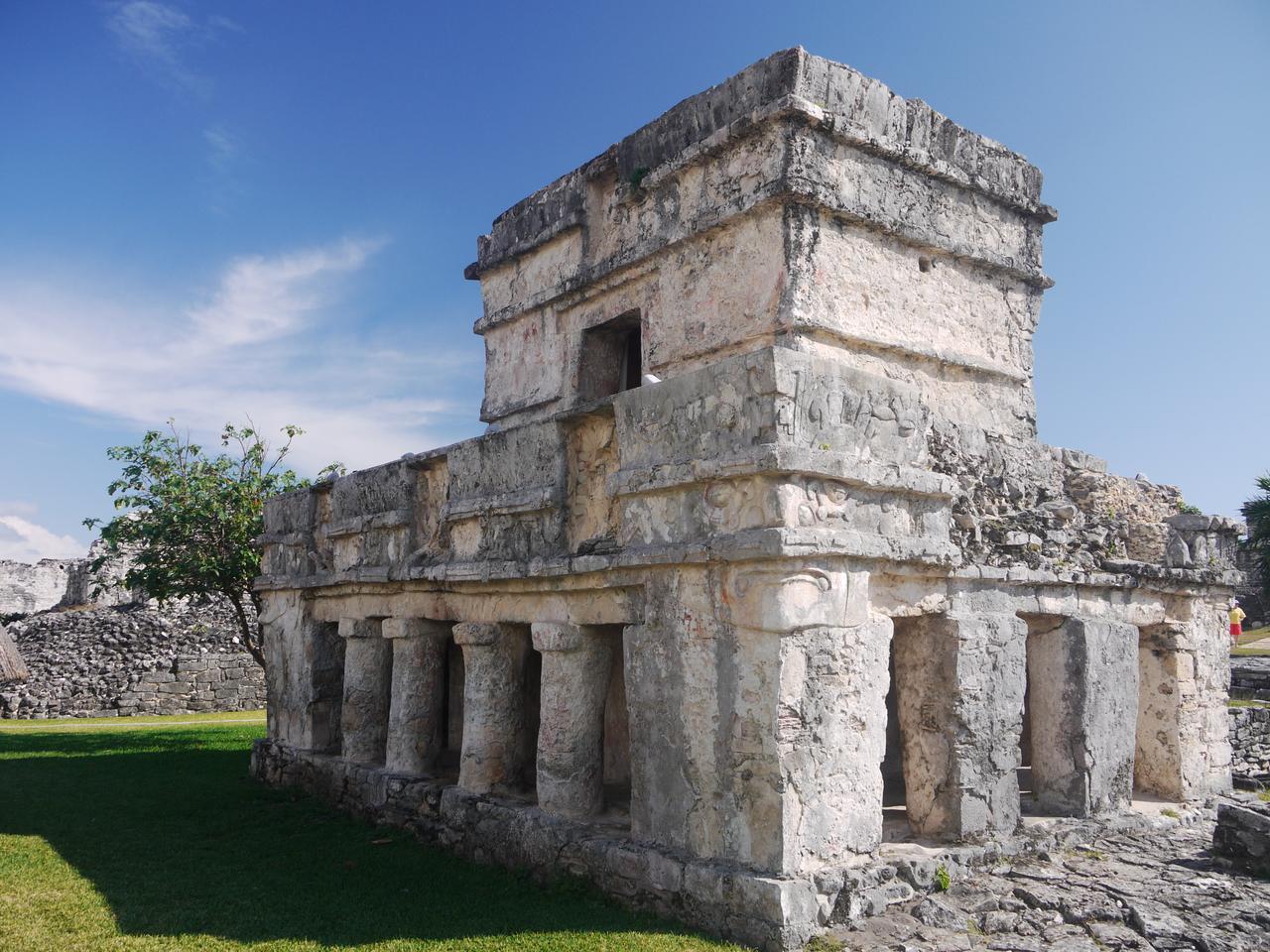 Ruins of Tulum
Ruins of Tulum
Sticking to locations that we’re somewhat able to pronounce, we visited Tulum, Chichen Itza, Ek’ Balam, and Palenque. The former two are saturated with tourists, and for good reason. Tulum sits on a cliff overlooking a magnificent Caribbean beach. All the structures are roped off, so swimming in the sea was probably the highlight of that particular visit.
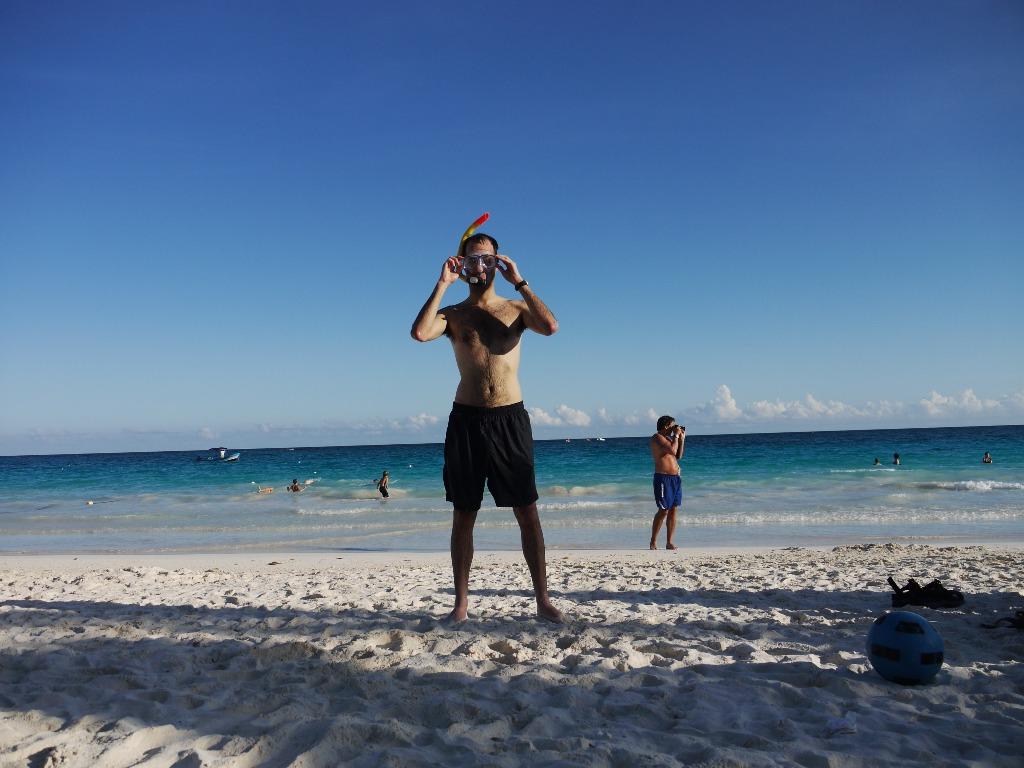 Ready for some snorkel action
Ready for some snorkel action
Chichen Itza has an eminently photogenic giant pyramid that appears on every other T-shirt sold in Cancun. But what the photos cannot show is the amazing acoustic design of the site: face the pyramid and clap your hands, and the resulting echo sounds like a bird’s call (a quetzal, to be exact). The site also includes a ball court - another acoustic marvel - where elite players would compete in a game somewhat similar to basketball. At the end of the game, the captain of the winning team was sacrificed to the gods. The Mayans sure knew how to motivate their professional athletes.
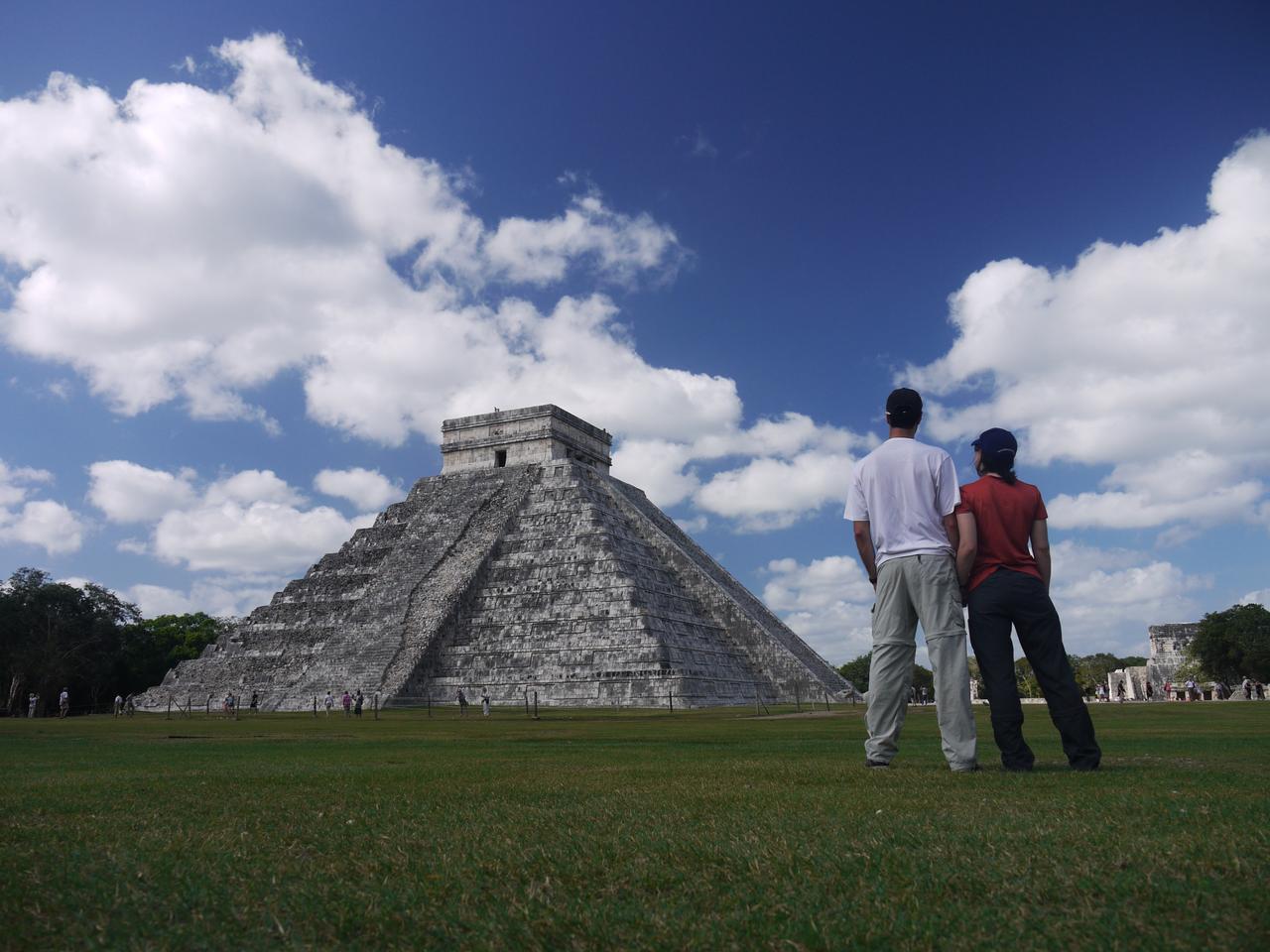 Chichen Itza - pyramid of Kukulcán
Chichen Itza - pyramid of Kukulcán
Ek’ Balam is another ruin, which relatively few people bother to visit. As in most smaller sites, visitors are free to clamber over the pyramids and other structures to their heart’s content. Palenque, surrounded by jungle and well out of range for package tourists, is a real gem, but it’s not strictly speaking in the Yucatán and therefore doesn’t belong in this report.
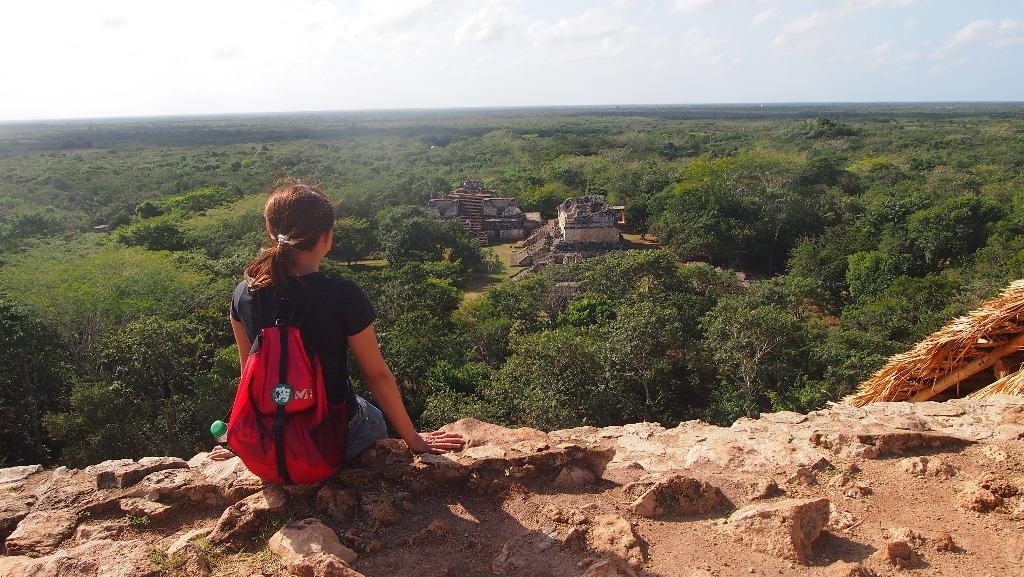 Ruins of Ek' Balam
Ruins of Ek' Balam
Drinking Coconut price index
Grand Cenote (near Tulum): 30 pesos
Ek’ Balam: 20 pesos
Progreso (beach town north of Mérida): 20 pesos
Oxkutzcab (farm town south of Mérida): asking price was 6 pesos, but the transaction was complicated by the vendor’s shaky grasp of basic mathematics. He handed us 37 pesos change from a 50 peso bill, and when we protested he examined the coins, thought about it some, and gave us another 10 peso coin. We gave him back two pesos and departed, leaving the confused entrepreneur to try and figure out what just happened.
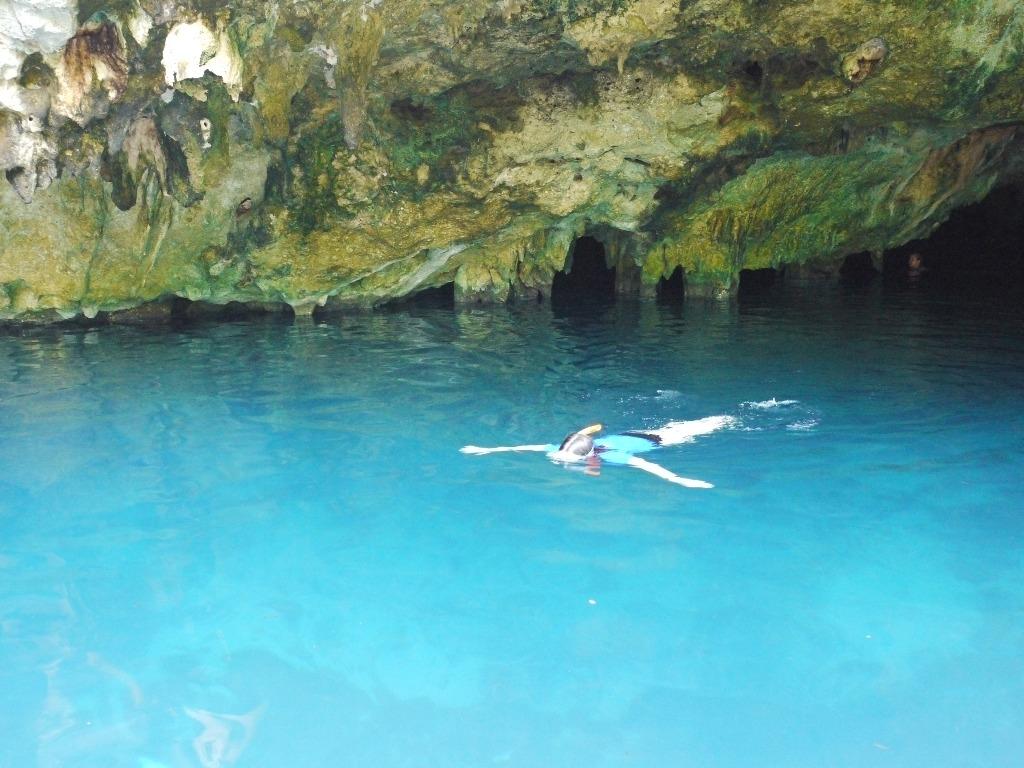 More snorkel fun in Grand Cenote
More snorkel fun in Grand Cenote
Tortillaland
In 2010, UNESCO added traditional Mexican cooking to its list of “Intangible Cultural Heritage”. You could argue that all of Mexican cuisine is a collection of variants of one single dish, but wow, is that dish ever tasty. We’re finally able to explain the difference between tacos, enchiladas, fajitas and tortillas. Still not sure about sopes vs. tacos, though.
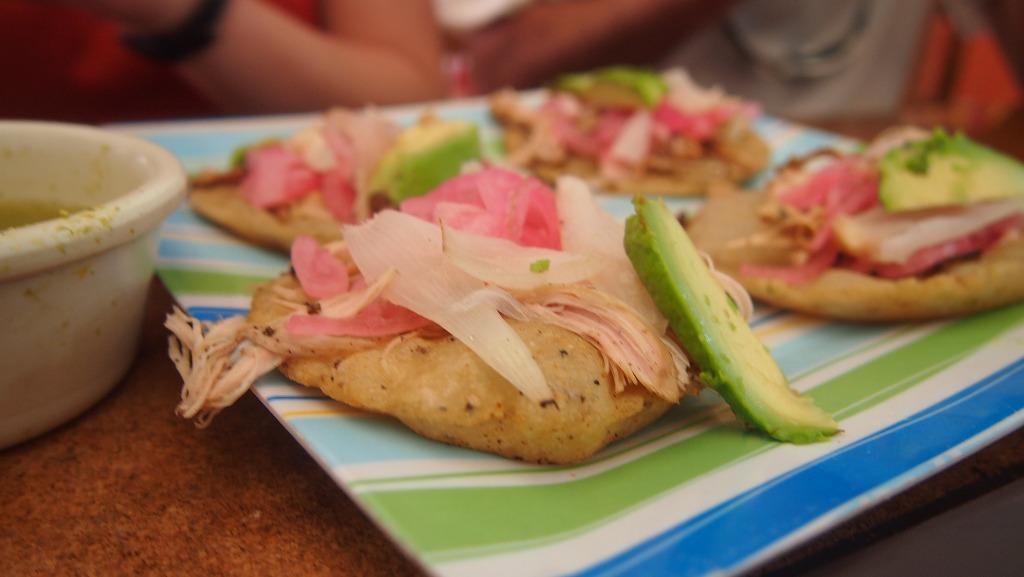 Cheapo salbutes at the food court in Valladolid
Cheapo salbutes at the food court in Valladolid
The Yucatán region has its own variations on the main theme. We especially liked their salbutes, but the panuches weren’t bad either. We signed up for a cooking lesson in Mérida, learning how to make sopa de lima and pollo pibil. It was delicious, but not likely to become a house staple, since some ingredients are hard to acquire outside Yucatán.
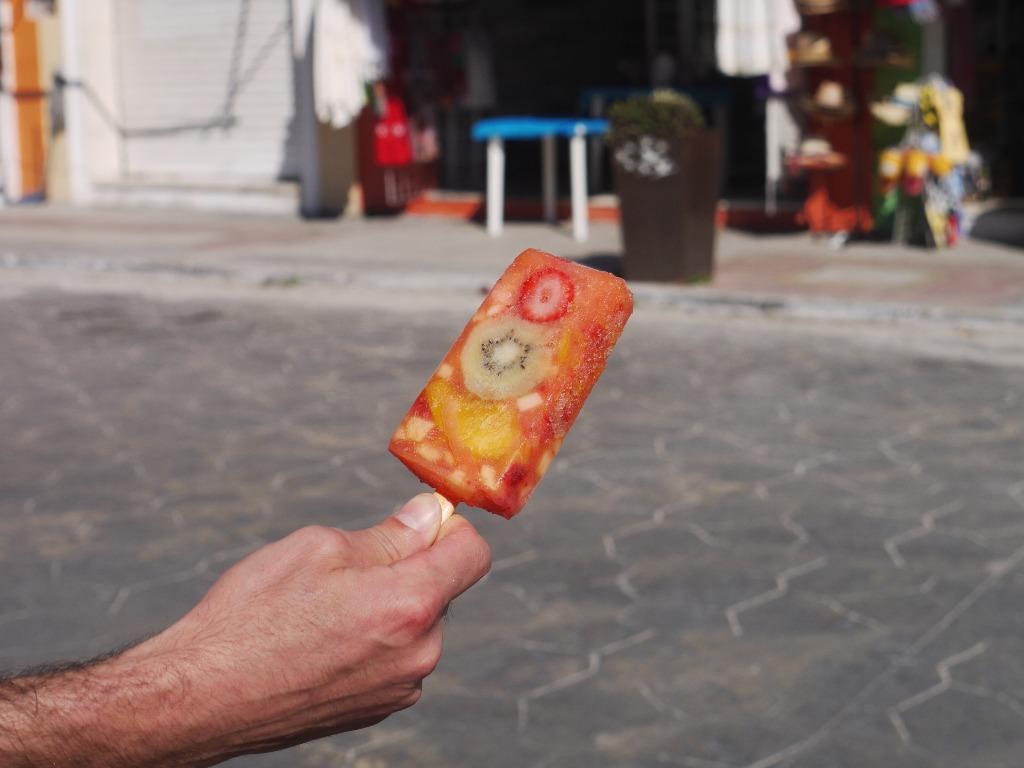 Fresh fruit paleta, Progreso beach
Fresh fruit paleta, Progreso beach
Other observations regarding Mexican food: much of their diet seems to consist of snacking, which may explain why body shapes tend to range from robust to obese. Drinks are loaded with sugar, particularly local favourites horchata (rice flour and coconut, pretty good) and jamaica (hibiscus tea, pretty bad). Fried cow udder is quite tasty. Mérida has a large enough Lebanese diaspora that some of their food has been adopted by the natives, with street vendors selling kibbe stuffed with spicy coleslaw. Some of the local beer is quite drinkable (Negra Modelo in particular).
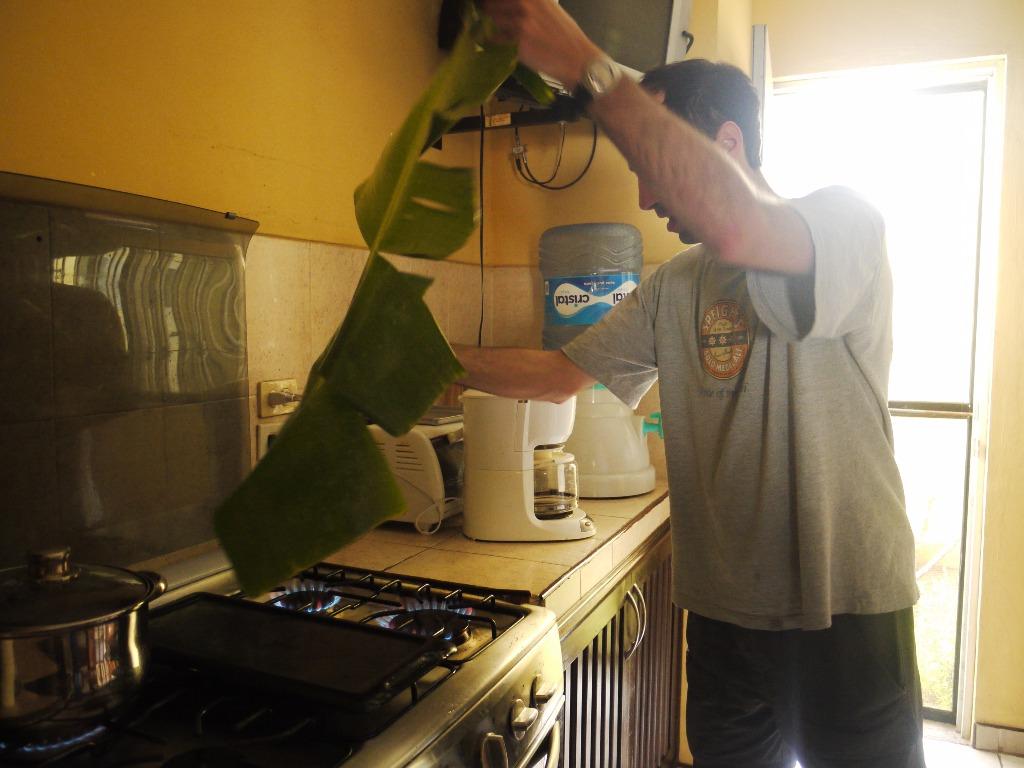 Roasting banana leaves for pollo pibil
Roasting banana leaves for pollo pibil
Hawkers
“Merengue merengue!” cries the hawker walking back and forth on the beach in Progreso. Mexicans naturally love meringue, essentially pure puffed sugar. The next hawker tried to sell us a hammock (hamaca), but hammocks vary widely in quality and thus not a good choice for an impulse buy. He then offered to sell us cigars instead. That didn’t fly either.
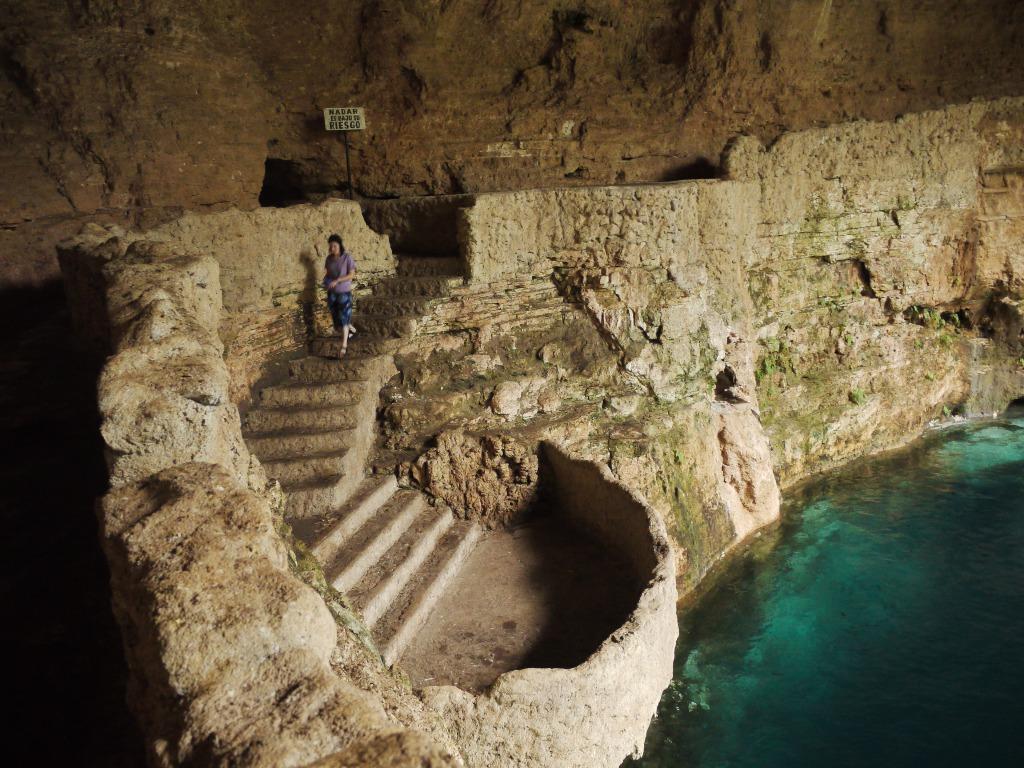 Cenote Zaci, Valladolid
Cenote Zaci, Valladolid
Grid Cities
Yucatán’s main settlements, Mérida and Valladolid, are arranged in massive grids. So is Vancouver, but whereas we find Vancouver very easy to navigate, Mérida and Valladolid can be disorienting and vaguely claustrophobic. Back-to-back building facades line the streets, all roughly the same height and with very few obvious landmarks. Streets are numbered, with even numbers running north-south and odd numbers running east-west.
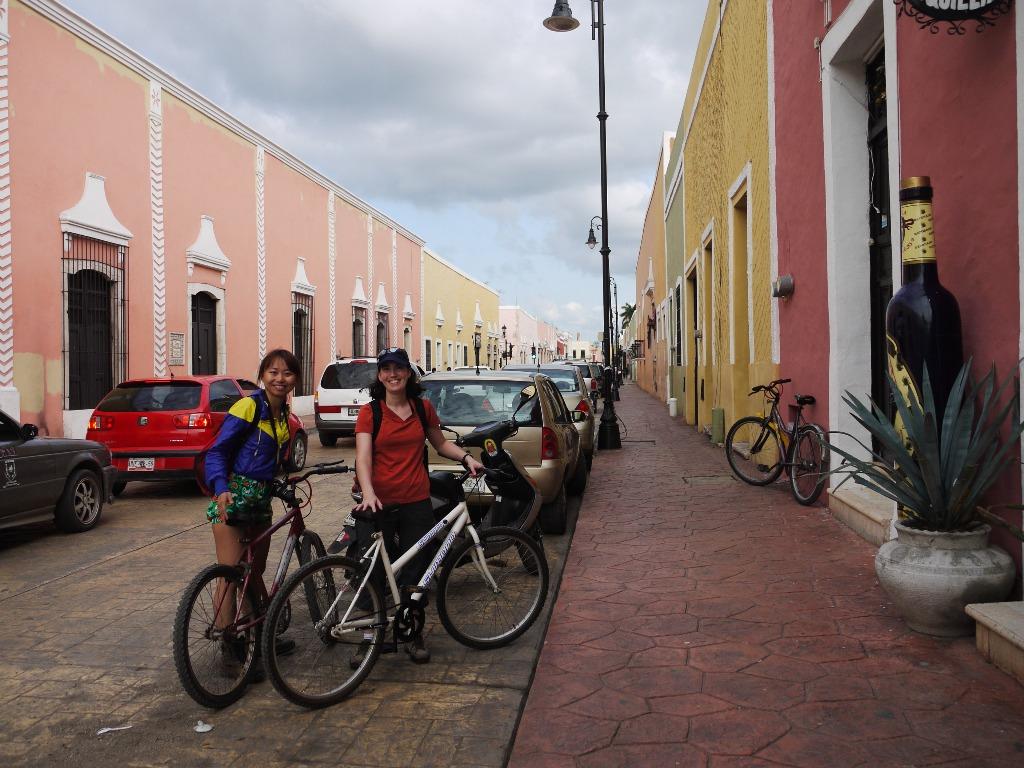 Dana and Yaqing in downtown Valladolid
Dana and Yaqing in downtown Valladolid
Navigation woes aside, both towns are quite appealing, with the sometimes-crumbling facades giving way to beautiful inner courtyards if you bother to peek inside. Mérida is a city a million strong and drawing new foreign settlers by the boatload. Valladolid is like a smaller, more relaxed Mérida, with a cenote (swimming hole) bang in the centre of town. It’s still a bit of a backwater: when we asked a local in Tulum what’s the best way to get to Valladolid, his answer was - “drunk and destitute”.
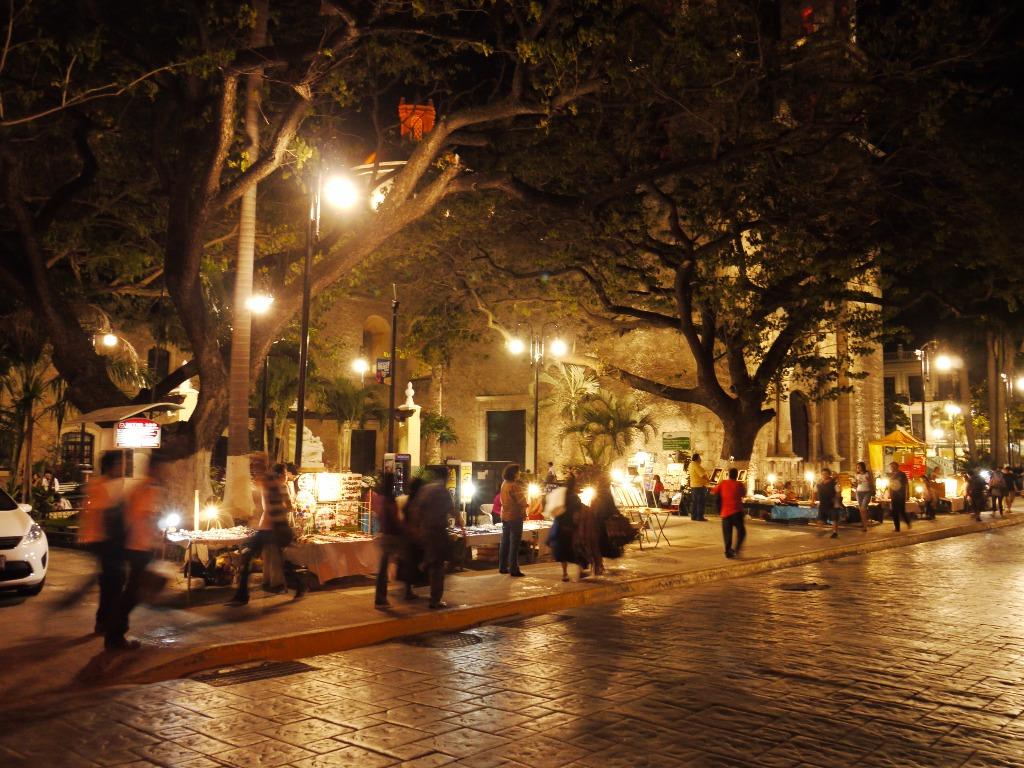 Downtown Mérida at night
Downtown Mérida at night
More photos from Yucatán here.
Next update: Zapatista sympathizers and bizarro-world village festivals in Chiapas.